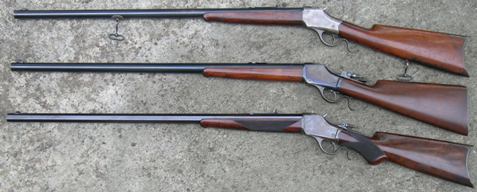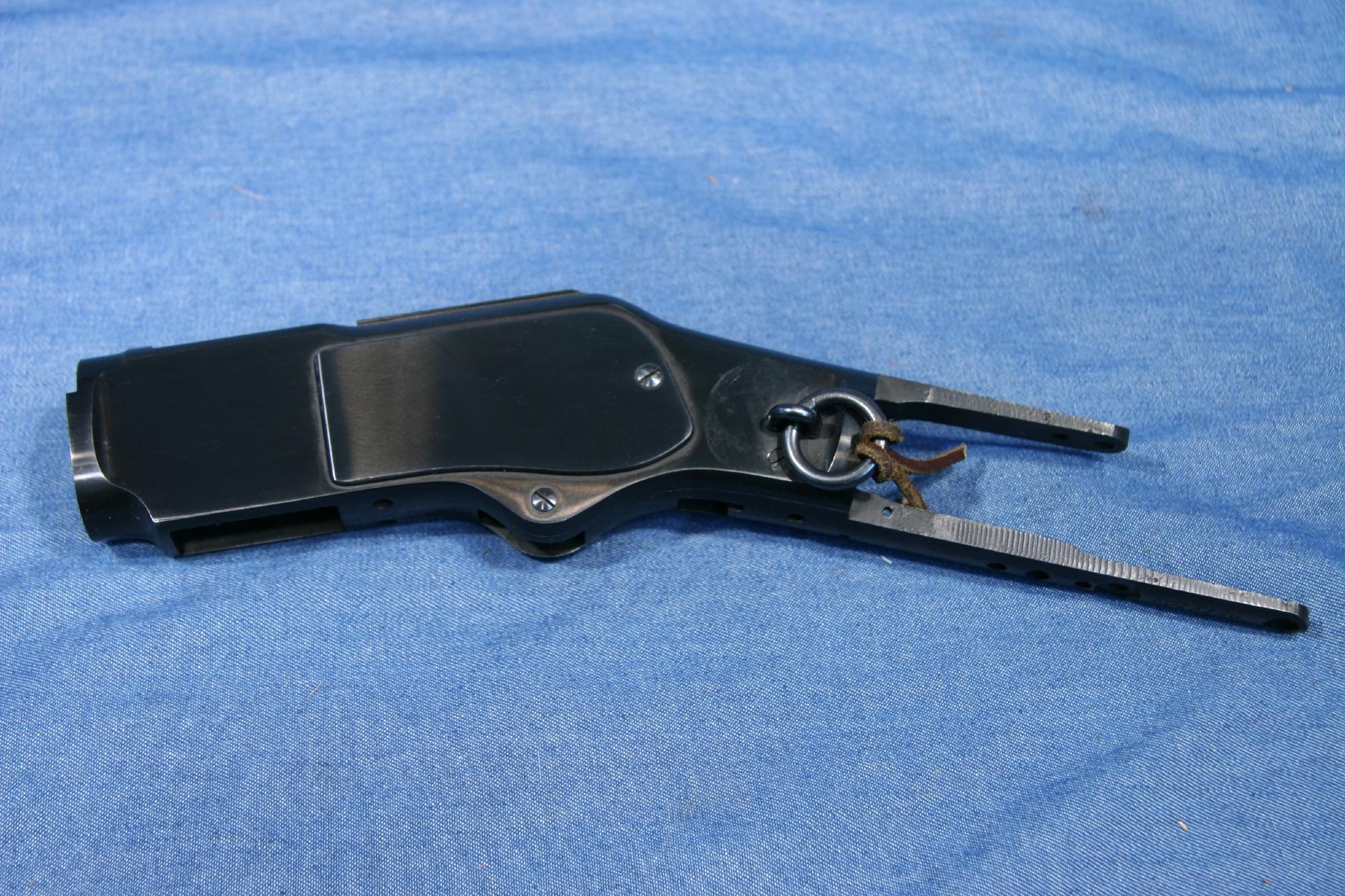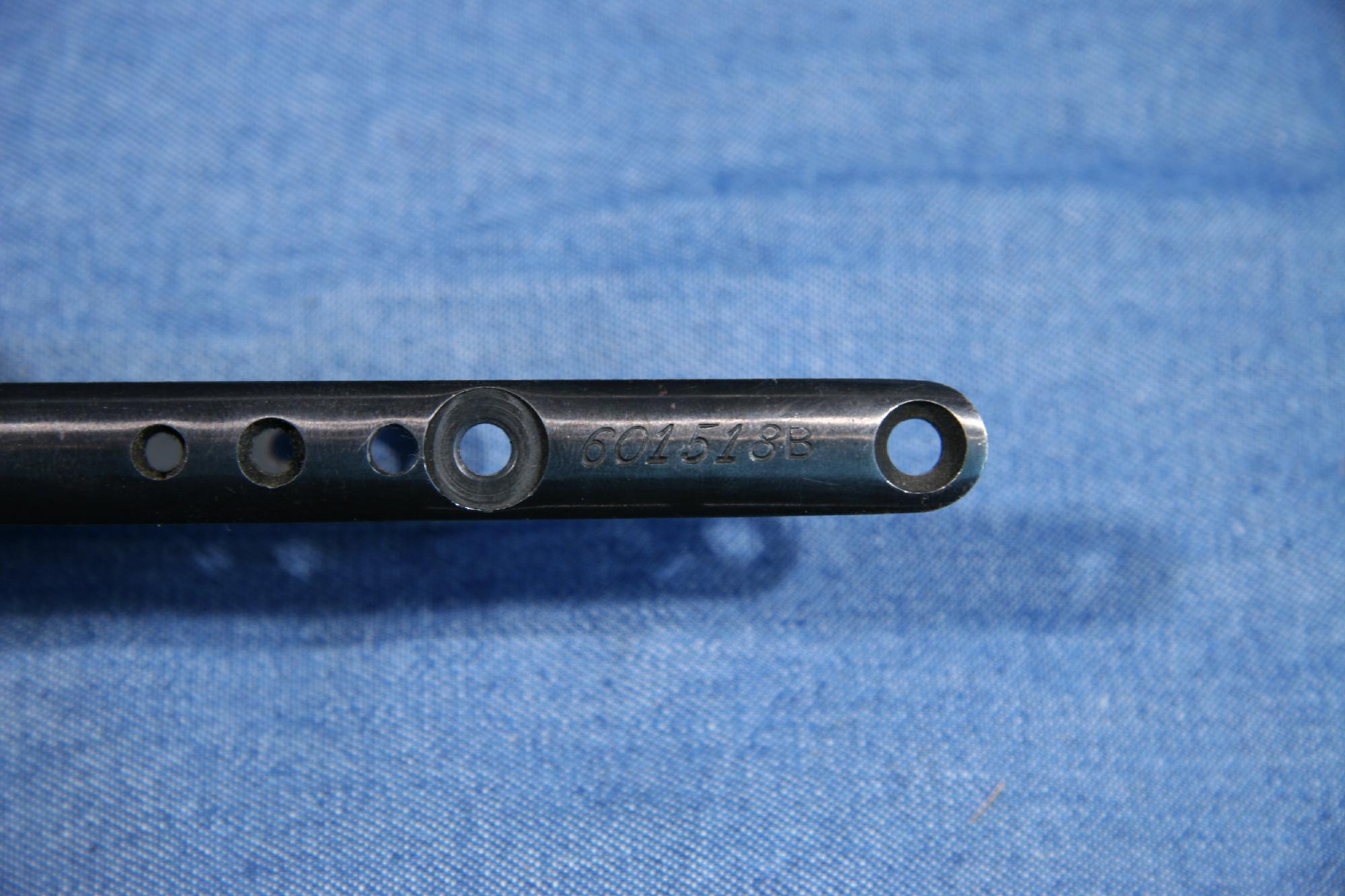I’m just curious about the George Madis DOM data that we keep referring to.
Has anyone been able to find out and explain what Winchester records George Madis used when he published his DOM data for the various Winchester models?
It’s hard to imagine that he could have overlooked something so obvious as the Polishing Room Records which establish when a serial number is put on a receiver. I understand that this is then used as the manufacturing date.
Maybe they told him that these records had been destroyed for some models? I’ve heard the stories about how Winchester did destroy old records at various times possibly because they ran out of storage room.
I’ve tried doing a search on this forum, but couldn’t find the answer. I’ve also tried the George Madis Website, but their email addresses don’t seem to work anymore.
The dates that Madis gives rule out the Polishing Room records and, for at least some models, they rule out the Warehouse receiving and shipping ledgers at Winchester as well. For example, for dates around 1898 for the Model 1894, he is off by a few years when one looks at the actual ledgers Winchester used to document rifles received in warehouse and shipped. If he didn’t use the Polishing Room records, and if he didn’t use the warehouse ledgers, then I am at a loss as to what he used. I’ve heard that he may have used sales records, but that doesn’t fit either when you look at his dates for the first few years of the Model 1894, his numbers can’t possibly match the number sold, as there weren’t even that many built yet. The only thing I can think of is that he used an extrapolated curve to give an estimate of how many guns were shipped each year. Such a curved might give a rough idea over the years, but it would have the potential of being off by a significant margin for any particular year.
For the Model 53, he states that those that were numbered in the Model 92 serial number range were early transitional rifles, but it turns out that it was the exact opposite … they are the later rifles when one checks both the polishing room records and the barrel dates on those rifles. However, when one checks Madis’s dates for the Model 92, one sees that the Model 53’s numbered in the Model 92 serial range cannot possibly be the early transitional models, so it appears that he gave contradictory information for the Model 53. My guess is that, judging from the number of pages he devoted to the Model 53, he had little interest in it and, thus, did little research into the history of that particular model.
In the front of his pocket DOM book it says. “This book is partially complied from records at the Winchester factory in New Haven and records now at the Buffalo Bill Historical Center in Cody, Wy. Most of the information has been derived from records now in the writers’ possession.” I would think if he knew about the PR records he would of used them.
Bob
WACA Life Member--- NRA Life Member---- Cody Firearms member since 1991 Researching the Winchester 1873's

Email: [email protected]
Based on my own extensive research of this very topic during the past 30+ years, I have come to the conclusion that George definitely did not use the PRR, or appear to ever have been aware of them, as he never made mention of them in any of his tomes. Oddly enough, there were several other authors that were aware of the PRRs, as they used them in their respective books (Roger Rule, Ned Schwing, and Herb Houze). As for the warehouse ledger records books, George was certainly aware of them, but he apparently did not use them for a number of the models (e.g. 1885, 1892, 1894, 1897 just to name a few). As for what information source he actually used… who knows, and with his passing 12-years ago, we are unlikely to ever know what his source of information was. The only remaining thing that can be said at this point, is that we can state with certainty that his source of information was not accurate.
Bert
WACA Historian & Board of Director Member #6571L

I’m still curious about a couple of things.
Were the serial numbers stamped on receivers just before them being assembled into complete guns,
or were they put in a parts bin for later use?
Also, did all of the assembled guns go to the warehouse prior to being shipped out,
or were some models shipped out otherwise.
I’m just trying to get a more complete picture of how things were done in the Winchester factory manufacturing processes for the various models.
The receivers were stamped with the serial number and from what Bert has said it was 2 to 3 weeks and the finished gun was enter into the warehouse. I have heard stories about receivers being left in a bin for long periods of time but I have no evidents of that. I would think the idea of putting receivers in a bin is wrong since they would get damaged so the receivers were probable put into wooded racks or trays so they would not touch each other when moved to the assemble area and probable stayed in the trays until used. That way the receivers could be used in order and you had less handling of the part which is more efficient.
Every gun would of gone into the warehouse before being sold. Even guns used in the factory for their own purpose. As an example here is a receiver for a 73 carbine that was held in the cost department. It was enter into the warehouse but never sold. It letters “Receiver only”, entered the warehouse Oct 9 1908, No shipping date listed and in the remarks it says “This receiver is being held by the cost dept.”
Bob
WACA Life Member--- NRA Life Member---- Cody Firearms member since 1991 Researching the Winchester 1873's

Email: [email protected]
Yes, I, too, would find the idea of Winchester just placing receivers in a ‘bin’ a bit far-fetched as well. For those of you that own A History of the Colt Revolver from 1836 to 1940 by Haven & Belden, check out pages 489 to 508. This is the chapter entitled “A Trip Through the Present Plant of Colt’s Patent Fire Arms Manufacturing Company”. It shows many photographs of craftsmen at work, fitting and shaping current stock. It looks like in the photos parts when not in use are neatly stacked in specially fitted wooden racks. I suspect that Winchester would have employed a similar system.
I am quite sure that receivers would have acquired a variety of nicks and dings if tossed into a bin. It is much more likely that they were placed in wooden trays which, themselves, would have been placed on a dolly carrying a number of trays. I did run across a case where there was a several year gap between the date the serial number was applied and the received in warehouse date. It was a Model 1876 I once owned. The serial number put it in 1882 but the received in warehouse date was in 1886. Not sure what happened in the meantime.
1 Guest(s)


 Log In
Log In Members
Members Home
Home

 Add Reply
Add Reply Add Topic
Add Topic Offline
Offline







